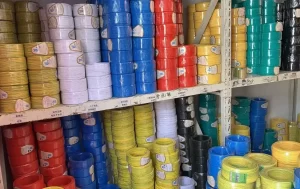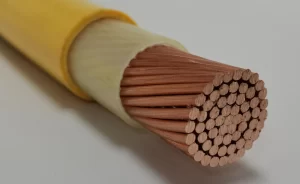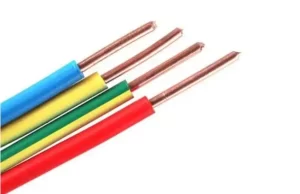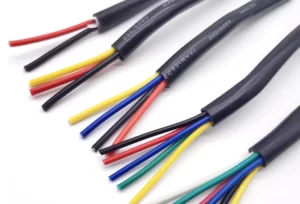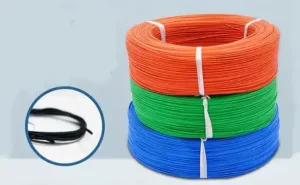Different Types of Electric Wires: Residential Application, Uses and How to Select
Various kinds of electric wires will be encountered when you plan or perform an electrical setup. Each type has its unique functions of guaranteeing safety and functionality. It is vital to opt for a matched wire since it has the possibility of impacting the overall performance of the setup and compliance with standards. The kinds of electric wires, their designations, and their practical uses will be explained in this blog.
Electric Wire, Electric Conductor, and Electric Cable
Before going deep into the kinds of wire, learning about the differences among widely used terms like electric wire, electric conductor, and cable remains essential.
Electric Conductor
Typically made of fine copper or aluminum, an electric conductor carries electricity because of their outstanding conductivity and low resistance.
Insulated Electrical Conductor
An insulated conductor is built with a metallic part in its core where the current can be transported. The insulation is a PVC or PRC jacket that protects the metallic component, enabling color-coded identifications, such as blue for neutral and green-yellow for ground.
Electric Cable
An electric cable combines several insulated conductors under an extra protective covering. This installation offers mechanical durability and simplifies setup by grouping several conductors into one pack.
Decoding Letters and Numbers of Wire Designations
You may find it complex when you take a first look at the designations on electric wires and cables, but they carry valuable information about the properties of wire. These codes, standardized by the European Committee for Electrotechnical Standardization, involve:
For Insulated Conductor
- H07V-U is commonly found in residential setups, the code is broken down to:
- H refers to Harmonized type.
- 07 means it is rated for up to 700V.
- V defines as PVC insulation.
- U names as Solid (rigid) copper core.
For Electric Cable
- 3G1.5:
- 3 means the quantity of insulated conductors.
- G means a conductor is green-yellow (applied for grounding).
- 1.5 refers that a cross-sectional area is 1.5mm square meter.
Understanding the codes helps you pick out the right wire or cable for your project’s needs.
Universal Electric Wires and Cables in Residential Application
Decoding the different wires and cables is helpful for you to pick out the best alternatives for specific uses. Some of the most widely used kinds are listed below:
H07V-U: Rigidity & Reliability
H07V-U wire is perfectly fit for most setups of household appliances. It’s typically maneuvered through ICTA conduits for the sake of protection. Some widespread applications involve:
- 1.5mm² H07V-U wire is more ideal for lighting circuits and low-electricity controls (up to 16A).
- The 2.5mm² type is applied for common sockets and mid-size devices (up to 20A).
- The 6mm² one is common for high-electricity devices like hobs or ovens (up to 32A).
Though it is rigid and reliable, larger sections of H07V-U may be challenging to route because of the stiffness.
R2V Electric Cable: Versatility and Efficiency
Multiple conductors are combined by the R2V cable into a single covering, which is time and effort-saving during setup. It’s highly useful for lighting and socket circuits and exposed setups in garages, cellars, or outdoor areas. It can also be passed through IRO tubes for extra protection.
H07V-K: Flexibility and Adaptability
This stranded copper wire is exceptionally flexible, which makes it fit for electrical panels requiring maneuverability and larger sections of circuits that become extremely rigid if using H07V-U. Ferrules are needed for H07V-K with insulating collars at each end to ensure tight connections.
Flexible & Rigid Wires: When and How to Select
The selection between rigid and flexible wires lies in your specific demands of installation.
Rigid Wire (H07V-U): This kind of wire has high durability and is less likely to cause damage in static uses. It is a perfect fit for straightforward setups with minimal bending like lighting or outlet circuits.
Flexible Wire (H07V-K) has lots of benefits, one of which is it is easily routed through tight or limited spaces. It can be perfectly applied for complex setups or areas where frequent adjustments are needed for wires, such as electrical panels.
Modern Uses of Electric Wires
The vital role of electric wires can be clearly shown in modern technology and systems, which expands their utility beyond traditional applications:
Smart Homes
Wires, such as H07V-K, play a vital role in linking sensors, controllers, and appliances in smart home installations.
Renewable Energy Systems
Renewable energy setups like solar panels are decided by specialized wires to link inverters, batteries, and energy management systems.
Electric Vehicle Chargers
High-current cables, such as R2V or large-section H07V-K, have widespread applications for powering EV chargers, guaranteeing efficient and safe operation.
Factors to Consider When Choosing Electric Wires & Cables
Balancing several considerations is required when picking out the appropriate wire or cable:
Voltage & Current Capacity
The wire should have the ability to support the voltage and current demands of the circuit. Examples include
- H07V-U works perfectly for circuits up to 700V.
- R2V cables simplify complex wiring settings by grouping several conductors.
Durability
Cables with protective coverings should be applied for outdoor or exposed setups to avoid physical damage.
Flexibility
- Rigid wires are more suitable for setups with straight routing.
- Flexible wires work well in limited spaces or where frequent adjustments are needed.
Best Cases for Safety of Electrical Work
When connecting with electric wires, the following guidelines to ensure safety and reliability should be adhered by:
- The use of right tools matters. Tools like cable strippers and crimping pliers allow the preparation of wires to be easy and safe.
- Color codes should be followed. Standard color conventions should be adhered to, such as blue for neutral and green-yellow for wire grounding.
- To ensure a secure connection, ferrules should be applied for stranded wires and all the secure connections should be confirmed to avoid issues like overheating or short circuits.
- The test should be conducted before use to verify continuity and insulation with a multimeter before the circuit is powered.
Environmental Considerations When Selecting Wires
Sustainability has been prioritized in electrical setups. Here are some ways that you can learn to decrease environmental impact:
- Eco-friendly materials should be selected. You can opt for halogen-free cables, which are safer during fires and more friendly to the environment.
- You can recycle copper from old wires to decrease waste and costs.
- Energy should be used more efficiently by choosing the right wire size to minimize energy losses when transferring.
Examples of Wire Pick-Out
Learning about the actual uses is helpful for you to clarify wire and cable options:
Scenario 1: Lighting Circuit Setup. 1.5mm² H07V-U wires are advisable for this scenario because it is able to handle lighting loads up to 16A and suit easily in conduits.
Scenario 2: Electrical Panel Connections. 10mm² H07V-K wires are more recommended for the reason that it has high flexibility that simplifies maneuvering and connections in limited spaces.
Scenario 3: Outdoor Wiring. R2V with 3G 1.5 is perfectly fit for the setup, as it is built with durable covering that can protect against extreme factors.
Electric wires, as well as cables, remain the backbone of any electrical setup. It is helpful for you to make the best option in terms of safety, efficiency, and longevity by knowing their kinds, specifications, and uses. We Vocson are known for premium-quality and innovative electrical wiring solutions, can provide reliable options tailored to modern needs. From rigid H07V-U for static circuits to flexible H07V-K for complicated installations, each type of wire plays a unique role.
As smart systems, renewable energy, and electric vehicle infrastructure are incorporated into modern electric setups, selecting the correct wire is more crucial than ever. By following the safety standards, considering environmental impacts, and following safety practices, reliable and sustainable electrical systems can be created.
Whether you’re managing a DIY project or overseeing a complicated setup, the information shared will guide you to achieve expected the results.
Related Reading
Comprehensive Guide to Wire Harness Prices
How to Choose the Right Electronic Wire Cables
Types and Applications of Copper Wire: A Step-by-Step Guide
Tinned Copper Wire VS Bare Copper Wire: Definition, Benefits, Applications, and How to Choose
Comprehensive Electronic Wires Selection Guide (8 Key Points)
AWG Wire Size 101: How To Calcula, Measure, and Use?

